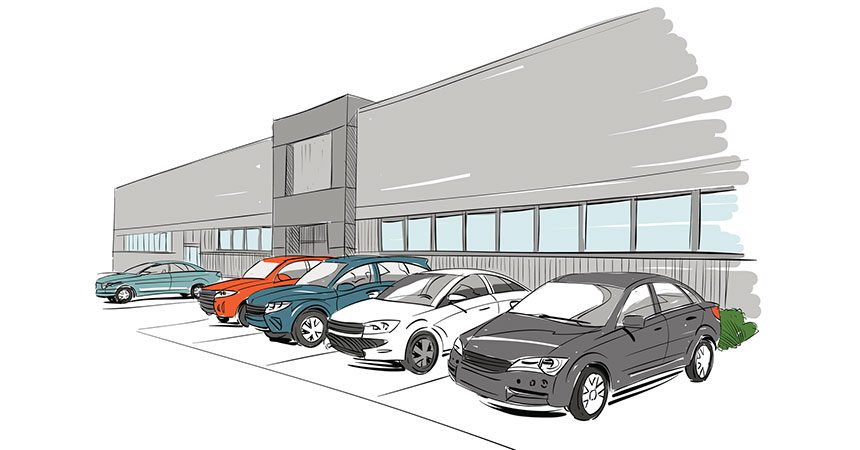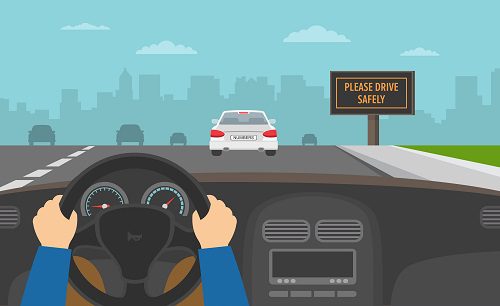
Dealers’ Open Lot, also known as Auto Physical Damage Coverage, provides physical damage coverage for vehicles owned by a dealership. As an important part of Garage Insurance, it is different from General Liability or Business Property Insurance. Dealerships are unique types of businesses, and Dealers’ Open Lot policies are tailored for the specific risks involved. Each insurance company’s interpretation will vary, so work with The DeHayes Group to be clear on all the provisions of your policy.
Vehicles covered may include private passenger vehicles (autos, pickups, minivans, SUVs, etc.), RV units, and other autos that are in a dealer’s inventory and are held for sale. Coverage is usually provided for used, new, demonstrators, or service vehicles. Most insurance companies require that dealers insure 100 percent of the value of the inventory. There are two options to establish the value for this type of coverage:
- Monthly reporting requires the dealer to send the insurance carrier a monthly report with the exact dollar value of the vehicle inventory. This option is typically used to ensure inventories with a value of more than $1,000,000.
- Non-reporting requires the dealer to state the maximum value of the inventory on the date the policy starts. For this option, it is important to pick the value of the inventory at its highest peak to avoid a coinsurance penalty.
What is the Coinsurance Clause?
Insurance companies generally require that dealers insure 100 percent of the value of their inventories. If you insure less than this, they will only pay a corresponding percentage of your claim. For example, if the value of your inventory is $200,000 and you insure it at $100,000, the insurance company is only required to pay for 50 percent of your claim. To be sure this doesn’t happen to you, check your limit each month.
It is tempting to think that when you have a certain amount of inventory insurance, and when a claim arises that is less than the amount of insurance you carry, you will collect the amount of the claim less the deductible. Instead, the most that will be paid for a loss to any single auto is the lesser of the actual cash value of the damaged or stolen property, the wholesale value of the property, the cost of repairing or replacing the damaged or stolen property, or the limit indicated as the most that will be paid for any single auto.
Limit per Unit, in Transit and Other Locations
It is important to ensure that the limit per vehicle—which is the maximum amount the insurance company will pay for each vehicle in the event of a loss—is high enough to avoid excessive loss in the event of a claim. The standard per-vehicle limit on the policy may be much lower than the value of each of your vehicles, so be sure to examine this value to ensure it is appropriate. Similarly, the in-transit limit may be too low if you have a portion of your inventory off-site. Even when 100 percent of the value of the inventory is covered, the limit per vehicle applies.
What is Covered?
Dealers’ Open Lot coverage is generally divided into two parts:
- Collision coverage pays for damage to a covered auto’s collision with another object or its overturn.
- Losses other than a collision that are covered depend on the policy and may include one of the following sets of inclusions. Be sure to read your policy to clarify specifics.
- Comprehensive provides coverage to a covered vehicle from any cause of loss except collision with another object or overturn.
- Specified Causes provides coverage to a covered vehicle or its equipment caused by fire, lightning, explosion, theft, windstorm, hail, earthquake, flood, mischief, vandalism, or the sinking, burning, or derailments of any conveyance transporting the covered vehicles.
- Fire and Theft provide coverage to a covered vehicle or its equipment caused by lightning, explosion, or theft.
- False Pretense provides coverage to a covered vehicle caused by someone who causes the dealer to voluntarily part with a covered auto by trick, scheme, or under false pretense. It also covers the dealer acquiring a vehicle from a seller who did not have clear and legal title. An example of a false pretense claim is a test drive where the driver does not come back. Most policies exclude false pretense, although it can be bought back.
Dealers’ Open Lot provides only physical coverage. A comprehensive Garage Liability policy will protect your dealership against liability exposure. Contact The DeHayes Group for more information.





